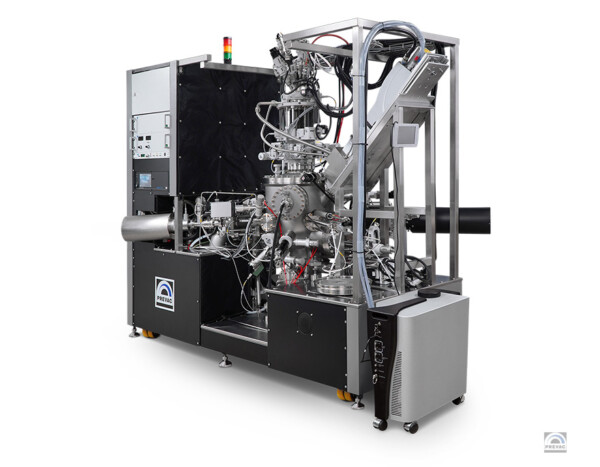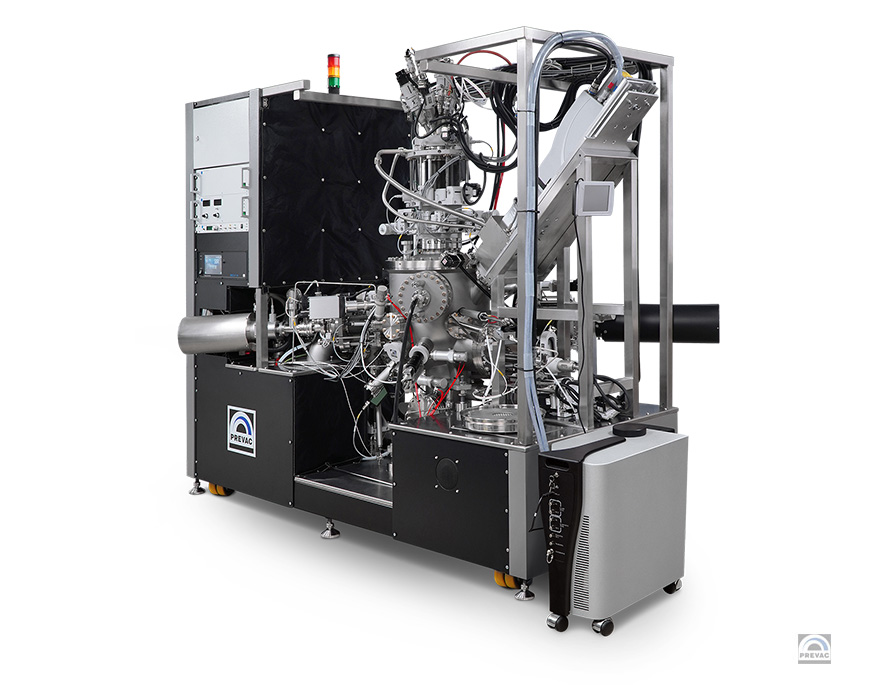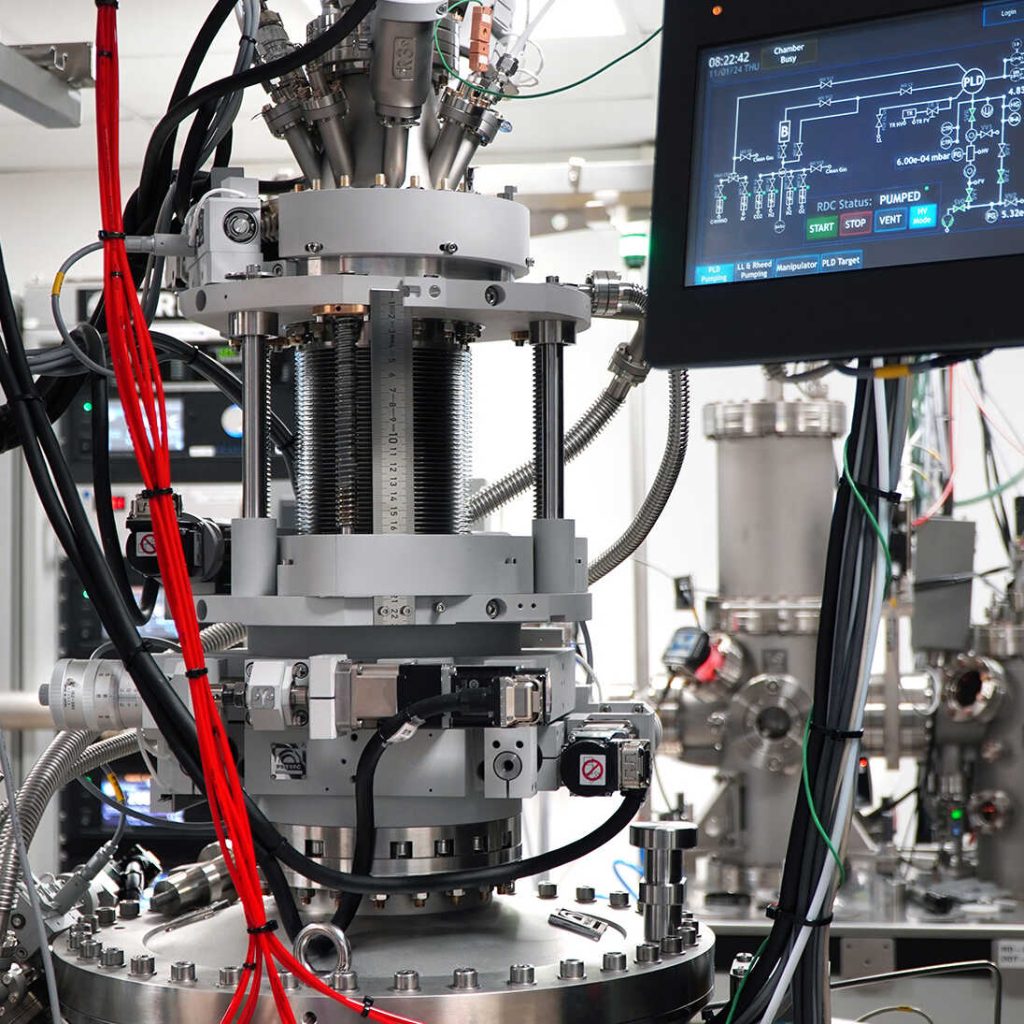

iPLD systems
An autonomous iPLD station is intended for the production and real-time monitoring of nanostructured layers. It provides a fully automatic process of applying material using laser ablation. Using the station resulting from the project, it is possible, among other things, to create multifunctional, protective and spatial nanolayers.
- Description
- Advantages
- Key Features
Description
Unleash the Power of Nanostructure Deposition with the
PREVAC iPLD Station
In the fast-paced world of nanotechnology, precision and innovation are paramount. Meet the autonomous PREVAC iPLD station, a cutting-edge solution tailored for the deposition of nanostructure layers through laser ablation. However, what sets this station apart?
THE NEW AUTONOMOUS PREVAC iPLD STATION is developing an advanced stand-alone station for nanostructure layer deposition by laser ablation. The iPLD station responds to real market needs, which are the search for and implementation of innovative techniques and technologies for creating and testing objects on a nanometric scale for science and the industrial environment. Innovative solutions allow for a fully automatic and programmable process of applying nanostructured layers practically immediately after unpacking and connecting the station to the power supply – plug and measure.
The autonomous iPLD station is intended to produce and monitor nanostructured layers in real-time. It provides a fully automatic process of applying material using laser ablation, making it possible to create multifunctional, protective, and spatial nanolayers.
The advantage is the ability to work in variable environmental conditions in the full range of pressures from the ultra-high vacuum (UHV) to a few millibars (HP). The system is equipped with several innovative solutions. These include an automatic manipulator that changes the position of the newly created material. This manipulation occurs in the material applied in a wide angular and linear range. Additionally, there is an integrated and automatic linear diaphragm for wedge layers or masks. The system also features an integrated laser beam fluency control system. Furthermore, there is a central software controlling the deposition processes. This software allows for conducting and monitoring research from anywhere worldwide through a secure Internet connection.
Modular design
Allows the personalization of selected components of the station without changing the central part.
Automation for efficiency
Automation of the process deposition based on predefined recipes, as well as enabling the generation of proprietary workflows. Graphical modules representing the status of system elements like Recipe Editor (XManager) with drag-and-drop operation. Extended recipes with subrecipes (macros) within a Python script.
“Plug and measure” system
The architecture of the “plug and measure” will be ensured by a unique compact design in which the entire station and all its components are ready for self-assembly, installation, and commissioning.
Pressure stabilization
The iPLD station boasts an impressive capability for pressure stabilization, ranging from 5×10-10 to 10 millibars (mbar) in the static and dynamic modes. This wide range allows for optimal conditions tailored to the specific requirements of the material deposition process.
Substrate Preparation
This is a 5-axis manipulator that changes the position of the substrate/new material in relation to the material to be applied over a wide angular and linear range. Moreover, it is equipped with an integrated automatic linear aperture for making wedge-shaped layers or masks, which move with the change in position of the substrate. Heating is possible to high temperatures of up to 1200°C. Remarkably, this process can be conducted in the presence of reactive gases such as oxygen, expanding the possibilities for material composition.
Process repeatability
To ensure consistency and reliability, the iPLD station maintains strict control over process conditions during layer production. Researchers can rely on the repeatability of results, which is essential for scientific investigations and industrial applications.
Rapid characterization
Integrating RHEED (Reflection High-Energy Electron Diffraction) control and imaging expedites the characterization of deposited layers. This quick method provides researchers with valuable insights into the structure and properties of nanostructured materials.
Standardization
The system sets a new standard in nanotechnology, offering a unified approach applicable across scientific and industrial settings. This standardization streamlines processes, facilitates collaboration, and accelerates advancements in the field.
Versatile material deposition
Using state-of-the-art laser ablation technology (Using Excimer or Nd: YAG laser), the iPLD station enables the precise deposit of materials across a broad spectrum of environmental conditions. An integrated automatic fluency laser beam control system and an optimizing system for the use of target materials are applied. This versatility ensures consistent and reliable results even in challenging settings. The station enables the installation of the deposition thermal sources (e.g. Effusion Cell), which further expands the scope and type of layers created.




